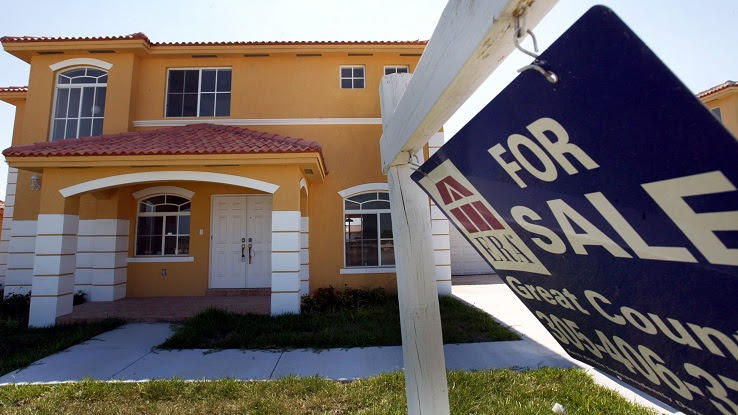Hoepa Regulation C : What it is
Hoepa Regulation C: What it is and How it Affects You Introduction In the world of consumer finance, regulations play a crucial role in ensuring fair practices and protecting consumers from abusive lending practices. One such regulation that is important to understand is the Hoepa Regulation C, which stands for Home Ownership and Equity Protection Act. In this article, we will delve into the details of the Hoepa Regulation C, its significance, and how it affects you as a consumer. So, let's get started! Subheading 1: Understanding Hoepa Regulation C Hoepa Regulation C was enacted as part of the Dodd-Frank Act in 2010, with the primary aim of curbing predatory lending practices in the mortgage industry. The regulation provides guidelines and restrictions for lenders to prevent them from taking advantage of vulnerable borrowers. 1.1 What is Predatory Lending? Predatory lending refers to the unethical and deceptive lending practices employed by some financial institutions that exploit borrowers, particularly those with limited financial knowledge or poor credit history. These practices typically involve charging exorbitant interest rates, imposing excessive fees, and offering loans with hidden terms and conditions. 1.2 The Purpose of Hoepa Regulation C Hoepa Regulation C was designed to address the problems associated with predatory lending and protect consumers from unfair and abusive practices. The regulation aims to achieve the following: - Define high-cost mortgage loans: Hoepa Regulation C sets criteria to identify high-cost mortgages, also known as Hoepa loans. These loans come with high interest rates, fees, or other unfavorable terms that can lead to financial distress for borrowers. - Require additional disclosures: Lenders who offer Hoepa loans are required to provide borrowers with enhanced disclosures that clearly explain the terms, fees, and risks associated with the loan. This enables borrowers to make informed decisions. - Prohibit certain lending practices: Hoepa Regulation C imposes restrictions on specific lending practices, such as balloon payments, negative amortization, and prepayment penalties. These prohibitions safeguard consumers from falling into further debt traps. Subheading 2: Key Protections under Hoepa Regulation C Now that we have a basic understanding of Hoepa Regulation C, let's explore some of the key protections it offers to borrowers. 2.1 Annual Percentage Rate (APR) Cap Hoepa Regulation C imposes an APR cap on high-cost mortgage loans. This cap ensures that lenders cannot charge excessive interest rates that would burden borrowers and potentially lead to loan default. The specific threshold for the APR cap varies annually based on the Federal Reserve Board's calculations. 2.2 Mandatory Counseling To educate and assist borrowers, Hoepa Regulation C mandates counseling for individuals seeking high-cost mortgages. Lenders are required to ensure that borrowers receive independent counseling to understand the terms, risks, and alternatives available to them. 2.3 Limited Points and Fees Hoepa Regulation C places limits on the points and fees that lenders can charge for high-cost mortgages. These limits prevent lenders from imposing unreasonable charges, ensuring that borrowers are not burdened with excessive costs that could strain their finances. Subheading 3: Frequently Asked Questions (FAQ) To provide further clarity, here are some frequently asked questions related to Hoepa Regulation C: 3.1 What types of loans fall under Hoepa Regulation C? Hoepa Regulation C applies to certain high-cost mortgage loans, including those with interest rates above a certain threshold, points and fees exceeding a specific percentage of the total loan amount, or loans with risky features such as balloon payments. 3.2 How does Hoepa Regulation C benefit borrowers? The regulation acts as a safeguard for borrowers by enforcing restrictions on predatory lending practices, ensuring transparent disclosures, limiting points and fees, and imposing an APR cap. These protections allow borrowers to make informed decisions and avoid falling victim to abusive lending practices. 3.3 What should borrowers do if they suspect a violation of Hoepa Regulation C? If borrowers suspect a violation of Hoepa Regulation C, they should report it to the Consumer Financial Protection Bureau (CFPB), which oversees the implementation and enforcement of the regulation. The CFPB will investigate the complaint and take appropriate action if a violation is found. Conclusion Hoepa Regulation C serves as a crucial protective measure for borrowers in the mortgage industry. With its provisions and restrictions on high-cost mortgage loans, the regulation ensures transparency, fair lending practices, and borrower empowerment. By understanding the details of Hoepa Regulation C, consumers can make well-informed decisions and avoid the pitfalls of predatory lending. Remember, when it comes to financial matters, knowledge is power! Disclaimer: The information provided in this article is for educational purposes only and should not be considered as financial or legal advice. Please consult with a financial professional or attorney for specific guidance regarding your situation. Sources: - "Pin von Hoepa auf Dorinchen / Grabschmuck" by Hoepa, Pinterest - "New Threshold Amounts for 2022 under Regulation Z CARD Act, HOEPA and" by TCARE Government Solutions, Tcaregs.com  Image Source : www.askmoney.com
Image Source : www.askmoney.com  Image Source : www.lorman.com
Image Source : www.lorman.com  Image Source : www.askmoney.com
Image Source : www.askmoney.com  Image Source : pdf4pro.com
Image Source : pdf4pro.com  Image Source : www.tcaregs.com
Image Source : www.tcaregs.com  Image Source : www.tcaregs.com
Image Source : www.tcaregs.com  Image Source : businesslawtoday.org
Image Source : businesslawtoday.org  Image Source : www.pinterest.de
Image Source : www.pinterest.de
What Are HOEPA Loans?
 Image Source : www.askmoney.com
Image Source : www.askmoney.com Regulation Z: HOEPA And Higher-Priced Mortgage Loans (HPML
 Image Source : www.lorman.com
Image Source : www.lorman.com What Are HOEPA Loans?
 Image Source : www.askmoney.com
Image Source : www.askmoney.com HPML Vs. HOEPA Comparison Chart - Mortgage … / Hpml-vs-hoepa-comparison
 Image Source : pdf4pro.com
Image Source : pdf4pro.com New Threshold Amounts For 2022 Under Regulation Z CARD Act, HOEPA And
 Image Source : www.tcaregs.com
Image Source : www.tcaregs.com 2019 Thresholds Under Regulation Z’s CARD Act, HOEPA And QM Sections - TCA
 Image Source : www.tcaregs.com
Image Source : www.tcaregs.com Recent Changes To HOEPA | Blt
 Image Source : businesslawtoday.org
Image Source : businesslawtoday.org Pin Von Hoepa Auf Dorinchen / Grabschmuck | Grabschmuck, Allerheiligen
 Image Source : www.pinterest.de
Image Source : www.pinterest.de Hpml vs. hoepa comparison chart. Pin von hoepa auf dorinchen / grabschmuck. What are hoepa loans?. Regulation z: hoepa and higher-priced mortgage loans (hpml. New threshold amounts for 2022 under regulation z card act, hoepa and